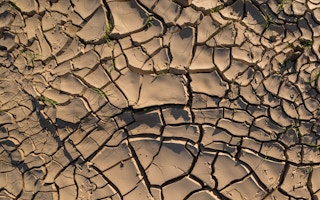Changing rainfall patterns may be depleting India’s groundwater storage more than withdrawals for agricultural irrigation, says a new study published in January by Nature Geoscience.
While India’s diminishing groundwater is widely attributed to over extraction, especially in the northern agricultural belts of Punjab and Haryana, the study holds decline in rainfall caused by the rise in the temperatures in the Indian Ocean — a major factor in monsoonal rainfall patterns over the Indo-Gangetic Plain — to be a more important cause.
“This study adds another dimension to the existing water management framework. We need to consider not just the withdrawals but also the deposits in the system,” says Yoshihide Wada, co-author of the study and deputy director, Water Programme, International Institute for Applied Systems Analysis, Austria.
“
This indirectly suggests that the declining trends may continue in the future because of this warming — which can affect water availability in the region.
Vimal Mishra, lead author
Importantly, the study finds links between the rise in sea surface temperatures of the Indian Ocean and the declining monsoonal rainfall which the study’s lead author Vimal Mishra says may be linked to climate change, though this is yet to be scientifically proven.
“Rise in the sea surface temperature in the Indian Ocean affects the rainfall in the Indo-Gangetic Plain. The long-term decline in rainfall in the Indo-Gangetic Plain is related to temperature in the Indian Ocean. This indirectly suggests that the declining trends may continue in the future because of this warming — which can affect water availability in the region,” Mishra, who is also an assistant professor at the Indian Institute of Technology, Gandhinagar, tells SciDev.Net.
India relies heavily on groundwater for irrigation particularly in the dry northern regions where precipitation is scarce. Groundwater withdrawal has increased tenfold — from 10—20 cubic kilometres per year in 1950 to 240—260 cubic kilometres in 2009.
Satellite imagery shows major declines in groundwater, particularly in northern India. India should avoid growing water-intensive crops in water-stressed regions such as Punjab, Mishra tells SciDev.Net. He also suggests the development of policies and technology to improve groundwater recharge during the monsoon season and also improvement of irrigation efficiency through adoption of scientific methods such as the use of sprinkler and drip systems.
According to a report by the Punjab Agricultural University (PAU), more than 1.3 million tube wells irrigate 73 per cent of agricultural land in Punjab where the total annual demand for irrigation is 4.76 million hectare metres.
Punjab, as per the PAU report, accounts for only 1.5 per cent of India’s geographical area but contributes 35 per cent and 60 per cent of India’s rice and wheat granaries, respectively.
This piece was produced by SciDev.Net’s South-East Asia & Pacific desk.










